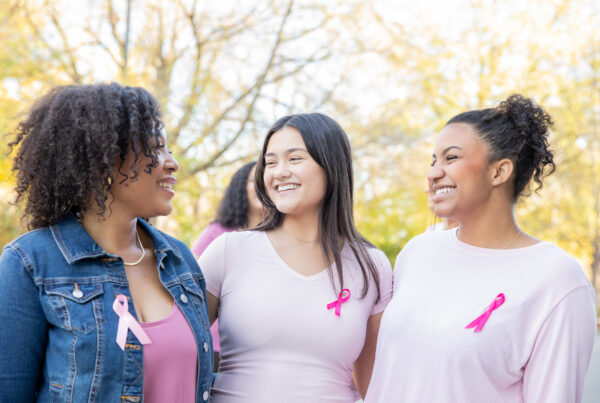by Jennifer Rea, PhD.
“Transitions are times of both opportunity and vulnerability characterized by adjustments to cultural shifts that require management of relationships and social identity.”
Drs. Pedlar, Thompson & Castro (2019), contributing authors in the book; Military Veteran Reintegration
All individuals experience major life transitions, such as entering adulthood, marriage, or retirement. Though, transition stress is normal, to varying degrees, transitions can challenge everyone and can be extremely stressful for some.
Military families experience a variety of transitions — from transitioning to new homes to leaving the military and entering civilian life. For these families, no two transitions are the same — every transitioning Service member and their family has unique individual needs and transition journeys.
In a November 2015 study (Zoli, Maury, & Fay, 2015), more than 8,500 Veterans, active duty Service members, National Guard and Reserve members, and military dependents identified their most significant transition challenges, including:
● Navigating Veterans Affairs (VA) programs, benefits, and services (60%);
● Finding a job (55%);
● Adjusting to civilian culture (41%);
● Addressing financial challenges (40%); and
● Applying military-learned skills to civilian life (39%).
A major transition that encompasses each of these challenges is the transition of leaving the military and entering into civilian life; commonly referred to as the military-to-civilian transition or MCT.

Cover image used with permission by the U.S. Veterans Magazine
“The military-to-civilian transition is not a moment in time — it is a process that begins well before a Service member leaves the military and lasts long after becoming a civilian.”
– VA, 2018
“Every year, approximately 200,000 men and women leave U.S. military service and return to life as civilians” (Department of Veterans Affairs (VA), 2018 Report). Transitioning out of the military typically involves a series of adjustments, including location, employment, education, family roles, support systems, and social networks (Castro, Kintzle, & Hassan, 2015).
While many Service members and their families transition into civilian life well, some face substantial adjustment challenges (Pedlar, Thompson, & Castro, 2019). Some of the challenges thought to uniquely affect Veterans leaving military service, include:
● A shift in identity;
● Unemployment or underemployment;
● Relationship and family problems;
● Physical or mental health problems;
● Problems accessing health care and rehabilitation services; and
● Suicide (Pedlar et al., 2019).
These challenges have also been found to impact Veteran spouses in much the same way.
Therefore, as we work with military families, we should be shifting toward a more holistic, complete framework to providing care – understanding that every member of the family unit experiences the transition (Keeling, Borah, Kintzle, Kleykamp, & Robertson, 2019).
Most military families are able to cope well with these challenges using available administrative, family, and community support. However, some families experience greater stress levels and additional challenges.
These families may require additional support, and many different programs and services have been established to assist families during this stressful period.
Military-to-Civilian Transition Resources & Programs
Many programs and organizations provide resources for transitioning Service members and their families. In addition to VA, other federal agencies, including Department of Education (DOE), Department of Labor (DOL), Office of Personnel Management, and Small Business Administration, offer specific programs for Veterans and their families.
All-Inclusive
Here are a few comprehensive and well-recognized programs and resources that may be helpful as Military Family Service Providers assist Service members, Veterans and their families navigate the MCT.
● Transition Assistance Program (TAP), now referred to as Transition GPS (Goals, Plans, Success) is designed to build skills that allow Service members to depart “career ready” and meet mandatory Career Readiness Standards (CRS).
o All Transition GPS modules are also available to spouses during the Service member’s transition planning. The Transition GPS Virtual Curriculum is available online through Joint Knowledge Online (JKO), at any time, for Service members and spouses unable to participate in the classroom training.
o Transition GPS advises Service members and their families to plan ahead for the MCT – at least 18 months prior to their exit as it’s a significant life event.
● Veterans Affairs (VA) offers a comprehensive list of benefits available to Service members and their families available throughout every stage of the Service member’s career.
● Disabled American Veterans (DAV) is a leader in connecting Veterans with meaningful employment, hosting job fairs and providing resources to ensure Veterans have the opportunity to participate in the American Dream.
● Military One Source offers an inclusive list of transition assistance resources and programs for active-duty, National Guard and Reserve Component service members and spouses.
o For example, they provide a tool to help military families locate the nearest Transition Assistance office.
● Military-Transition.Org helps Service members, Veterans, spouses and employers better understand and prepare for the military-to-civilian transition process and civilian employment.
Employment & Education
Here are a few resources that may be helpful to assist Service members, Veterans and their families as they seek employment and/or continue their education.
● The DoD SkillBridge initiative promotes the civilian job training authority available for transitioning military Service members. Service members meeting certain qualifications can participate in civilian job and employment training, including apprenticeships and internships with government or industry partners
● MySECO is a DoD Spouse Education and Career Opportunities program that provides education and career guidance to military spouses worldwide. MySECO offers comprehensive resources and tools for all stages of career progression.
o MySECO developed a new transition assistance program targeted specifically for military spouses, entitled MySTep (Military Spouse Transition Program). The program helps military spouses to plan, prepare and be ready for the life their family wants after transitioning out of the military.
o DOL offers resources to military spouses on license transfers associated with relocation.
● Credentialing Opportunities On-Line, or COOL helps Service members find information on certifications and licenses related to their Military Occupational Specialties, enhancing the Service member’s ability to transition to the civilian workforce.
● Syracuse University’s Institute for Veterans and Military Families (IVMF) deliver programs in career, vocational and entrepreneurship education and training, providing Service members, Veterans and their families with the skills needed to be successful in education, work and life. Here are a few that they offer:
o Onward to Opportunity (O2O)— A career skills program that provides civilian career training, professional certifications and job placement support to transitioning Service members, members of the Reserves or National Guard, Veterans, and military spouses.
o Boots to Business — The curriculum provides assistance to those (Service members, including members of the National Guard and Reserves, and their spouses) interested in exploring business ownership or other self-employment opportunities.
Well-being
Here are a few resources that may be helpful to assist Service members, Veterans and their families with well-being, including multiple domains, such as employment; health; life skills; social environment, as well as physical, mental, social, and spiritual functioning.
● The Transition and Care Management Team at local VA Medical Centers helps connect post-9/11 Veterans to patient care activities and assists Veterans in navigating the VA health care system.
● Assisting Veterans in identifying with a new identity, including finding a sense of purpose, is thought to be an important determinant of success in adapting to post-military service life.
o The Journey of Veterans Map may be a helpful resource for Military Family Service professionals as you work with Veterans. This map covers ten life stages any Veteran may encounter, from pre-service to end of life. Each life stage lists out moments Veterans typically experience and associated VA services.
o And, here’s one for Veteran family members: Military & Veteran Caregiver Experience Map – A map to document the military caregiver journey and its impact on caregiver’s physical, psychological, financial, and social wellbeing. Information on the needs and emotions that caregivers experience at different parts of their journeys, as well as opportunities for intervention (where the right people, organizations, and service providers) are provided.
● VA’s Vet Center Program provides community-based readjustment counseling to eligible Service members, Veterans, their families, caregivers, and survivors to facilitate successful transition from military to civilian life.
o The Vet Center Call Center is one of the many support services provided. 1-877-WARVETS is a 24-hour, confidential call center where combat Veterans and their families can talk about their military experience or other issues they face as they readjust to civilian life.
● Concierge for Care (C4C) health care enrollment initiative connects transitioning Service members within 30 days of separation to educate and empower them to better understand their VA health care benefits.
Community Support
Studies indicate that one of the leading gaps in Veteran and military family services is not a lack of resources or capacity, but a lack of collaboration, coordination, and collective purpose. Check out these resources to support Service members, Veterans and their families as they transition into new communities.
● The National Resource Directory (NRD) is a resource website that connects Wounded Warriors, Service members, Veterans, their families, caregivers, and survivors to programs and services that support them.
● Community Integration Resources (CIR) Military Life Cycle module will instruct Service members where to get help within their community. The module prepares and equips Service members to find and use resources for themselves.
● The Startup Training Resources to Inspire Veteran Entrepreneurship (STRIVE) program is part of a landmark initiative that transforms Veterans and military family members into entrepreneurs. STRIVE leverages networks and education resources in local communities to support and advance veteran owned businesses.
● AmericaServes provides Veterans, transitioning Service members, and their families access to a simple and effective way to access and navigate a range of supportive services in their communities.
● The Veteran View provides individuals and service providers with strategies and tools to effectively serve, and build rapport and trust with Veterans and military families.
References
1. Castro, C. A., Kintzle, S., & Hassan, A. M. (2015). The combat veteran paradox: Paradoxes and dilemmas encountered with reintegrating combat veterans and the agencies that support them. Traumatology, 21(4), 299.
2. Department of Veterans Affairs (VA), 2018 Report). The Military to Civilian Transition 2018: A Review of Historical, Current, and Future Trends. Retrieved from https://www.benefits.va.gov/TAP/docs/mct-report-2018.pdf
3. Keeling, M., Borah, E. V., Kintzle, S., Kleykamp, M., & Robertson, H. C. (2019): Military spouses transition too! A call to action to address spouses’ military to civilian transition. Journal of Family Social Work. DOI: 10.1080/10522158.2019.1652219
4. Pedlar, D., Thompson, J. M., & Castro, C. A. (2019). Military-to-civilian transition theories and frameworks. In Military Veteran Reintegration (pp. 21-50). Academic Press.
5. Zoli, C., Maury, R., & Fay, D. (2015). Missing perspectives: Servicemembers’ transition from service to civilian life. Data-Driven Research to Enact the Promise of the Post-9/11 GI Bill (Institute for Veterans & Military Families, Syracuse University, November 2015).
Writers Biography
 Jenny Rea, Ph.D., is a military spouse and mom of four kiddos under six years. Jenny consults with OneOp and is an Assistant Professor of Practice in the Department of Human Services and Director of the Certificate in Military Families at the University of Arizona.
Jenny Rea, Ph.D., is a military spouse and mom of four kiddos under six years. Jenny consults with OneOp and is an Assistant Professor of Practice in the Department of Human Services and Director of the Certificate in Military Families at the University of Arizona.
Photo source: Adobe stock













